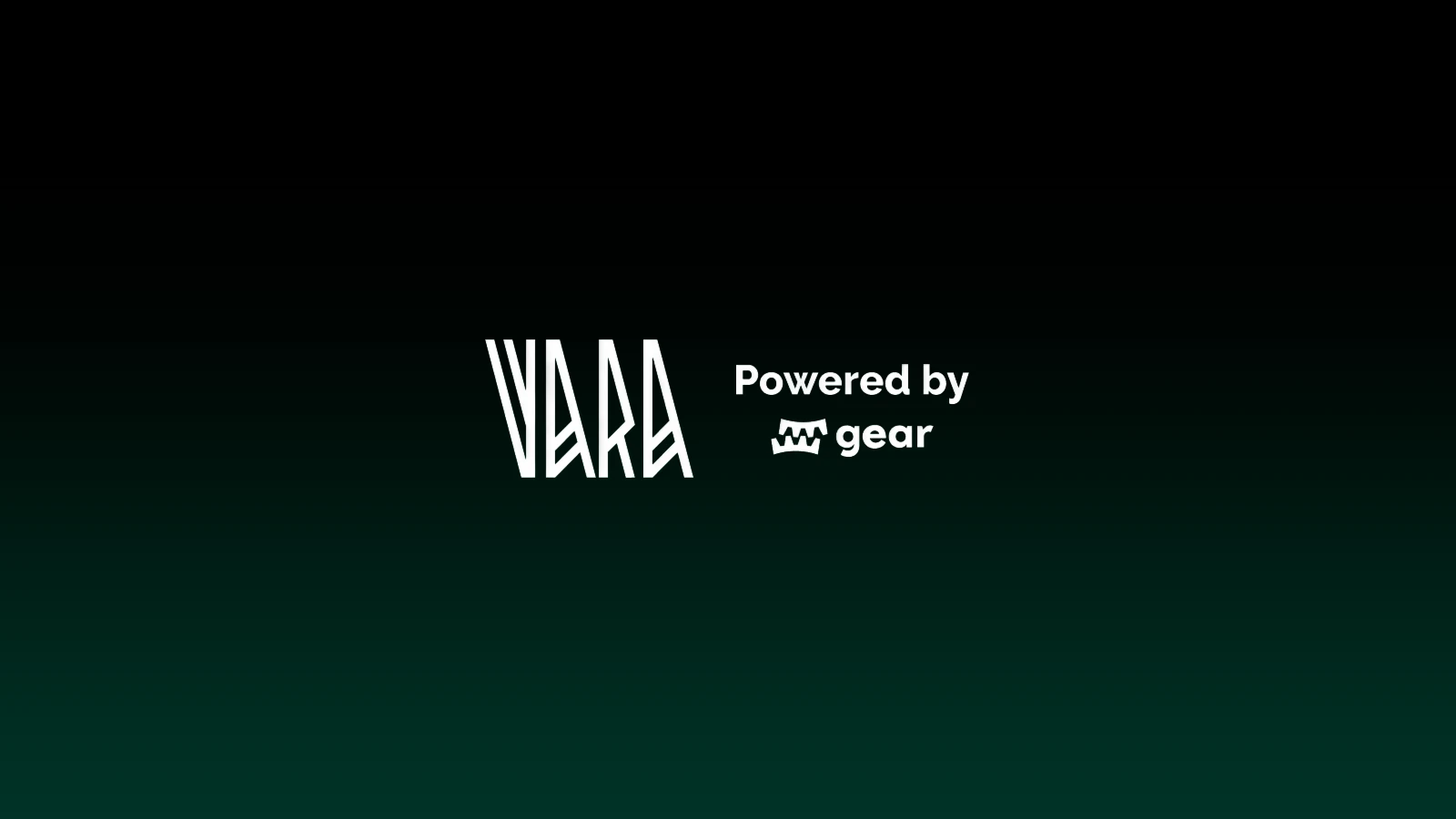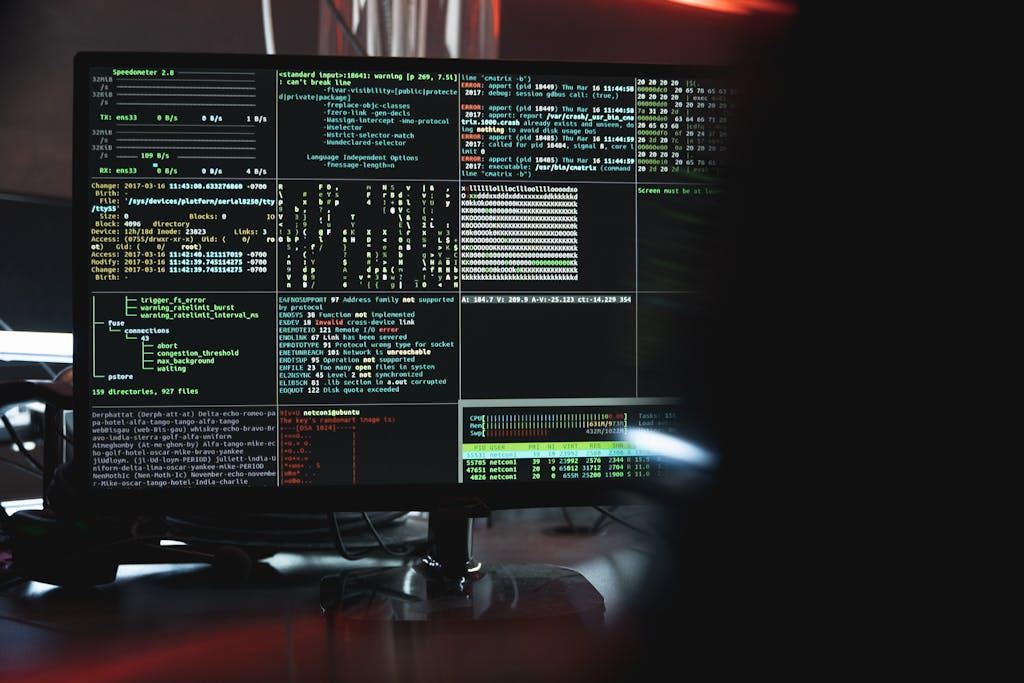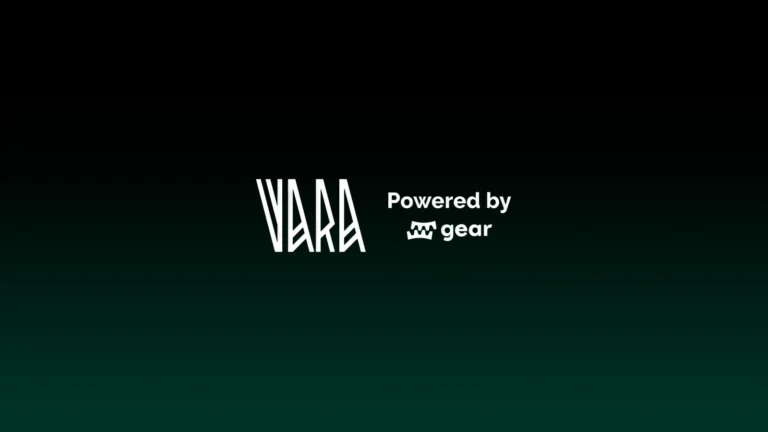How Vara Can Achieve Profitability: A Practical Guide

Vara stands out as one of the more technically sophisticated blockchains in the emerging ecosystem — fast, actor-based, WASM-native, and developer-friendly — but none of that matters unless it becomes economically sustainable.
Right now, the network faces three severe pressures:
- Daily unlock dilution (~10M VARA/day when including vesting + staking)
- Very low on-chain activity
- Extremely low gas fees (≈0.001 VARA per message)
Built on a fast, asynchronous actor model, powered by WebAssembly smart programs, and designed with developers in mind, the network offers a modern architecture capable of supporting advanced on-chain applications, autonomous agents, and high-frequency messaging. From a pure engineering perspective, Vara has everything required to support a thriving ecosystem: modularity, scalability, efficient messaging, and a programming model that feels more familiar and powerful than traditional EVM chains.
But technical strength alone does not create a sustainable economy. No matter how efficient the architecture is or how elegant the developer experience becomes, a blockchain must reach a point where its economic engine is self-sustaining. Without that, even the most impressive technology risks being overshadowed by basic market forces. To survive for the long term, Vara must shift from a technology-first identity to an economically resilient network—one where demand, usage, and value capture consistently outpace the emission and dilution of its native token.
At this moment, the network faces three significant economic pressures that threaten its ability to reach profitability. The first is daily unlock dilution, which introduces roughly 10 million VARA tokens per day into circulating supply when vesting schedules and staking emissions are combined. This creates a constant stream of new tokens entering the market—tokens that someone, somewhere, must be willing to buy or hold for price stability to be maintained.
The second challenge is extremely low on-chain activity. While Vara’s architecture is built for high-frequency message processing, the current level of usage is far too small to generate meaningful fee revenue. Transaction counts, program deployments, gas consumption, and message execution remain low compared to the scale necessary to offset dilution.
The third issue is very low gas fees. Currently, a typical on-chain message costs around 0.001 VARA, which amounts to a tiny fraction of a cent in dollar terms. Even with hundreds of thousands of transactions, fee revenue remains negligible. This creates a structural imbalance: high emissions on one side, almost no economic value flowing back into the system on the other.
For Vara to become profitable—or even economically stable—it must generate more real economic value than the amount of new supply entering the market. That means creating systems, applications, incentives, and use cases where VARA is not simply circulating, but being demanded, spent, burned, and required at a pace strong enough to exceed dilution.
The remainder of this article explains, step by step, how Vara can get there.
Reduce Token Dilution (The Critical Fix)

Even the best economy collapses if supply outpaces demand.
Right now, VARA faces:
- Big investor unlocks (5.89M/day for a year)
- Long team unlocks (1.83M/day for three years)
- Staking emissions
It is mathematically impossible for demand to overcome this without structural changes.
Fixes that work:
- Slow unlock schedules
- Introduce partial burns
- Reduce staking emissions
- Add token sinks
- Reduce vesting output
- Require VARA for long-term system-level functions
- Add deflationary mechanics in actors (developer-controlled burns)
A 50% reduction in daily dilution dramatically lowers break-even usage.
Increase the Economic Value Per Transaction

Today, Vara earns almost nothing per message:
0.001 VARA × $0.0016 ≈ $0.0000016 per transaction
That’s less than a ten-thousandth of a cent.
Instead of:
1 message = 0.001 VARA
Shift the model to:
1 message triggers 20–200 paid operations.
Total cost = 0.01–0.1 VARA.
This alone reduces the break-even point by 10× to 100×. To survive, Vara must increase the economic weight of each transaction. This is how to do it:
1. Internal Method Calls
Example: A user sends a message to a “Trading Engine” actor to place a trade.
Inside the actor:
fn place_trade(order) {
validate_user(order.user); // billable
validate_asset(order.asset); // billable
check_balance(order.user); // billable
calculate_fee(order.amount); // billable
match_orderbook(order); // billable
}
Gas charged per internal call:
- 5 internal method calls = 5× gas multipliers
- Actual billed fee: 0.01–0.03 VARA, not 0.001
2. Storage Updates
Any time the actor writes new state, charge higher gas:
Example: Updating a user’s portfolio after a trade.
state.portfolios[user].positions[asset] += amount; // billable storage write
state.portfolios[user].last_trade = block_timestamp; // billable storage write
Each write affects disk-backed persistent memory, which should cost more.
Gas implications:
- 2 writes = 2× storage-write gas
- Can represent 80–90% of total fee in real economic systems.
3. Queueing
Actors often push messages into internal or cross-actor queues.
Example: A scheduling actor that queues delayed tasks:
queue.push(Task {
actor: market_id,
action: "settle_trade",
timestamp: now + 3600,
}); // billable queue operation
Queue operations to bill for:
- inserting into a sorted queue
- rebalancing
- removing expired tasks
- FIFO reordering
Each queue push/pop = gas event.
4. Indexing
Actors often maintain custom indexes for faster access.
Example: A social app indexing posts:
state.by_user[user_id].push(post_id); // user index (billable)
state.by_hashtag[tag].push(post_id); // hashtag index (billable)
state.by_timestamp.push((time, post_id)); // time index (billable)
Each index is a separate storage structure, so each write = gas.
If a single user posts something:
- 3 indexes updated
- 3 writes
- multiple internal vector/hashmap operations
Total bill could be 0.02–0.05 VARA.
5. Validation Steps
Every workflow involves checks, and each check can incur gas.
Example:
require!(user.is_verified()); // identity validation
require!(signature_is_valid(sig)); // cryptographic validation
require!(balance > min_amount); // financial validation
require!(asset_is_active(asset)); // policy validation
These validations call utility functions that consume gas:
- signature verification
- hash comparison
- balance lookup
- access control
Validation-heavy systems generate high gas fees with minimal computation load.
6. Cross-Actor Messaging
This is where Vara can make the most revenue.
Example:
A marketplace actor sends messages to three other actors:
msg::send(payments_actor, PaymentRequest{...}); // billable
msg::send(notifications_actor, Notify{...}); // billable
msg::send(log_actor, AuditEntry{...}); // billable
Each message includes:
- payload serialization
- message routing
- queue insertion
- future invocation
Cross-actor messaging could have a multiplier on base gas, such as:
0.003–0.01 VARA per cross-actor call
So one user action could involve:
| Operation | Count | Gas Type |
|---|---|---|
| internal method calls | 5 | small billable ops |
| storage writes | 3 | high-fee ops |
| indexing writes | 3 | mid-fee ops |
| validations | 4 | mid-fee ops |
| cross-actor messages | 3 | high-fee ops |
Total gas billed:
≈ 14–25 sub-operations → 0.02–0.08 VARA per user action
That is 20–80× the revenue of today’s 0.001 VARA flat fee.
Summary of How Gas Can Be Multiplied
By charging gas for every meaningful sub-process inside actors, one on-chain message becomes a bundle of micro-operations, each billable:
- internal calls
- state writes
- indexes
- queue ops
- validations
- cross-actor sends
This dramatically increases economic value without requiring billions of on-chain transactions.
1 On-Chain Transaction = 10,000 Off-Chain Actions

Use batching. Rollup-like behavior can happen inside Gear’s actor model.
- One incoming transaction
- Actor processes thousands of internal steps
- Only the final state is recorded on-chain
- Users or apps interact off-chain, but settlement occurs on-chain
This is identical to how Ethereum L2s survive.
It is the only proven way to scale economic throughput.
What batching achieves:
- Off-chain actions count as “usage” without chain congestion
- Gas revenue increases
- Break-even demand becomes achievable
Mathematically:
7.7B required tx/day (impossible)
÷ 10,000 batching compression
= 770,000 effective tx/day (possible)
Now Vara does not need to be Solana-level fast — it simply needs smart batching actors.
Focus on High-Value Use Cases

Putting website data or other huge datasets on-chain is inefficient and economically destructive.
The chain should focus on high-value, high-fee, economically meaningful use cases, such as:
✔ Real financial flows
- remittances
- microfinance
- recurring payments
- automated escrow
- payroll contracts
✔ Autonomous agents (AI + blockchain)
- make payments
- store cryptographic memory
- coordinate tasks
- operate marketplaces
- Each message is money driven
✔ Gaming economies
- move
- trade
- duel
- upgrade
- loot action
Every action generates a fee.
✔ Managed marketplaces
- prediction markets
- gambling
- decentralized arbitration
- synthetic asset markets
These generate hundreds or thousands of micro-fees per user per day.
Low-value applications may generate large numbers of transactions, but they contribute almost nothing to the network’s economic health because each action carries minimal fees and minimal real-world value. By contrast, high-value use cases—such as financial operations, gaming economies, AI agent workflows, and automated marketplaces—produce far fewer transactions but generate significantly higher fees per interaction. These are the activities that create meaningful, sustainable revenue. In other words, profitability comes not from maximizing transaction count, but from prioritizing the kinds of interactions that carry real economic weight.
Introduce Dynamic Gas Pricing
Today, gas fees on Vara are static and extremely low—an approach that works well in a testnet environment but becomes economically disastrous in a live production ecosystem. Ethereum faced the same issue early in its development and ultimately resolved it through EIP-1559 and the introduction of dynamic fee markets. Vara must follow a similar path by adopting variable gas pricing models that adjust based on network conditions. This includes congestion-based pricing, surge fees during periods of heavy load, minimum floor prices for actor-level operations, and developer-defined fee tiers that reflect the complexity and economic value of different workflows. When demand rises, the cost of running an actor should rise with it. This ensures that network revenue scales naturally with usage, without relying on billions of individual transactions to keep the system economically viable.
Create Sticky, Recurring VARA Demand
The most important requirement for Vara’s long-term sustainability is the creation of sticky demand—a system in which users must return regularly and must spend VARA as a natural part of their activity. This type of recurring usage can emerge from several high-value sectors. In gaming environments, players return daily, and every move, trade, or upgrade generates revenue for the network. AI agents create an even stronger demand loop, as they constantly store, retrieve, update, and coordinate information, each interaction requiring a VARA-based message. Subscription systems provide predictable monthly demand as users pay for ongoing access in VARA, while payroll and automated financial flows ensure that every wage cycle or scheduled payout consumes network resources. On-chain marketplaces also reinforce this economic pull through continuous cycles of purchases, listings, disputes, and settlements, each of which triggers fee-generating transactions.
Together, these categories produce what can be described as economic gravity—a structural pull that keeps drawing VARA into circulation and ensures that usage remains constant, predictable, and value-rich. A profitable blockchain doesn’t need billions of trivial transactions; it needs millions of high-value actions each month, driven by real users and real applications that cannot function without the token.
Build Off-Chain Support Systems Around Vara
Profitability isn’t only on-chain.
It also comes from ecosystems that require the chain:
- SDKs
- AI agent frameworks
- enterprise APIs
- indexing layers
- message routers
- oracles
- data access products
- cross-chain connectors
- private-chain checkpointers
Vara becomes the messaging settlement layer for entire systems, not just a blockchain.
Off-chain networks generate demand for on-chain state commits and proof verification.
Conclusion: How Vara Becomes Profitable
Achieving real profitability for Vara requires more than incremental improvements; it demands a strategic shift in how the network captures value, processes activity, and positions itself within the broader blockchain ecosystem. The first and most critical step is to increase the economic value of each message. By charging gas not only for basic transaction submissions but also for the many internal processes that occur within actors—such as validation, storage writes, indexing, and cross-actor communication—Vara can transform a single message into a bundle of revenue-generating operations. This change alone would elevate the network’s fee capture by an order of magnitude.
Equally important is the adoption of batching mechanisms at the actor level. Batching allows thousands of off-chain interactions to be represented by a single on-chain state commitment, enabling the platform to scale economically without requiring billions of individual transactions. This approach mirrors the success of modern rollups and L2 ecosystems, proving that sustainable blockchain economies are built not on raw transaction volume, but on smart aggregation and efficient settlement.
Profitability will also depend on Vara’s ability to target high-value industries that naturally generate recurring, economically meaningful interactions. Sectors like gaming, payments, AI-agent infrastructure, prediction markets, and automated financial systems produce the kind of high-frequency, high-value activity that can support meaningful fee revenue. These industries do not merely create transactions—they create economic relationships, continuous activity, and persistent cycles of demand.
To support this activity, Vara must evolve beyond static gas pricing and adopt dynamic fee markets. When demand increases, fees should adjust accordingly, ensuring that network congestion translates directly into higher economic output. This is how Ethereum achieved long-term sustainability, and the same mechanics can allow Vara to capture real value during periods of heightened usage.
Another foundational pillar is addressing supply-side pressure. Without intervention, unlock schedules will continue to flood the market with new tokens. To counter this, Vara must take serious steps to reduce unlock-driven dilution, whether through vesting adjustments, partial burns, reduced staking emissions, or new token sinks. Profitability is impossible when supply growth vastly outpaces demand.
In parallel, Vara must build sticky, recurring demand systems—applications and infrastructures that create continuous usage rather than one-time events. This includes subscription systems, automated agents, recurring payments, gaming ecosystems, and enterprise workflows where VARA becomes the default medium of value transfer. Sticky demand creates predictability, retention, and continuous throughput, which are essential for long-term economic health.
Ultimately, the most sustainable identity for Vara is not as a bulk data host or simple transaction chain, but as a settlement and messaging backbone for high-value decentralized systems. By focusing on secure state transitions, verifiable program logic, actor-based execution, and efficient cross-chain or cross-agent communication, Vara can position itself as an indispensable layer for systems that require trust, speed, and programmable automation.
If Vara successfully executes on these priorities, the network can stabilize, reverse its dilution-driven decline, and grow into a robust economic engine. If these changes are ignored, however, the token will continue drifting downward under the relentless weight of emissions, unlocks, and insufficient demand. The path forward is clear: build real value, capture it effectively, and align the economic model with the technological strengths that make Vara unique.


